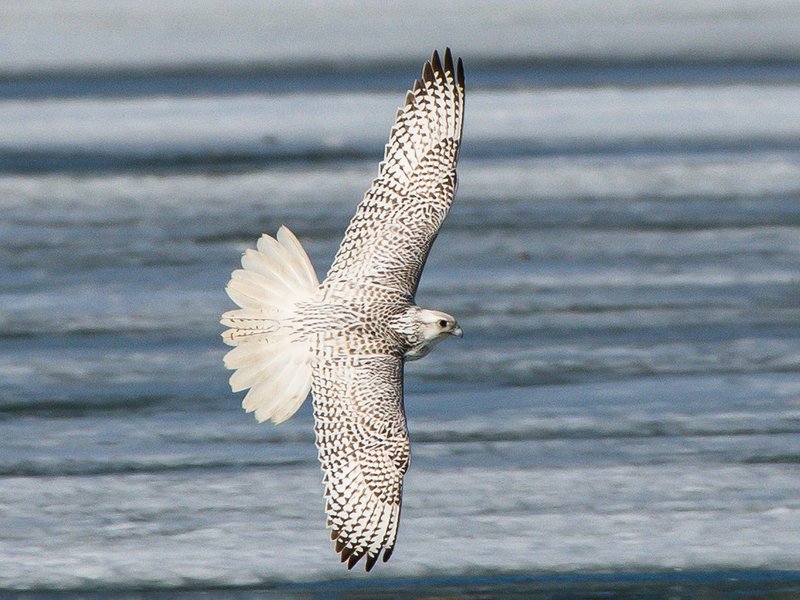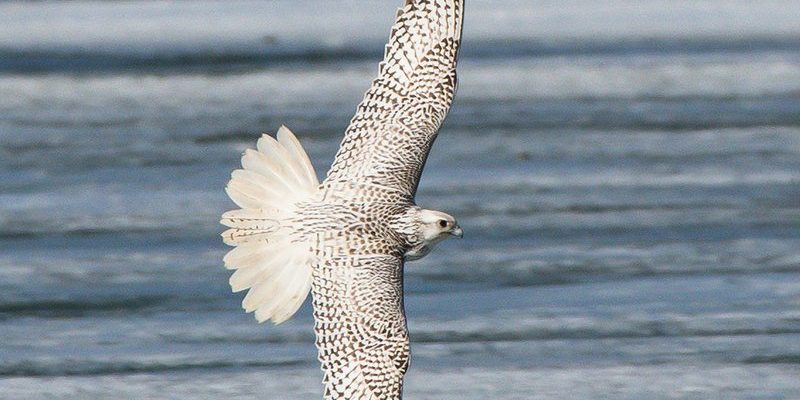
You might be wondering what makes gyrfalcons so unique in their ability to handle extreme weather conditions. Well, think of them as the superheroes of the bird world, equipped with powerful adaptations that allow them to conquer challenges that would leave most other creatures shivering in their boots. Let’s dive into the fascinating ways gyrfalcons navigate their unforgiving habitats.
Adaptations for Extreme Cold
Gyrfalcons primarily inhabit the Arctic and subarctic regions, where temperatures can plummet to bone-chilling levels. You can picture these vast, icy landscapes as nature’s ultimate obstacle course. So, how do these birds manage? First off, they have some impressive physical characteristics. Their feathers are thick and fluffy, almost like wearing a cozy down jacket. This insulation traps heat and helps keep them warm.
Additionally, gyrfalcons have a unique body structure. They’ve got stocky bodies and short tails, which reduce heat loss and make them more aerodynamic. Think of it this way: their build is like a well-designed vehicle made to cut through the cold air. They also have feathered feet, which act like built-in mittens, providing insulation against freezing temperatures.
Hunting Skills in Harsh Conditions
When it comes to finding food in such a desolate environment, gyrfalcons are nothing short of master hunters. Their diet mainly consists of birds, small mammals, and even the occasional fish. One of their most impressive strategies is their ability to spot prey from great heights. With keen eyesight, they can see their next meal from way up in the sky.
Gyrfalcons also employ different hunting techniques depending on the season and the availability of food. For instance, during winter, they might perch on elevated spots and wait patiently for prey to unsuspectingly walk by. They’re stealthy and quick, launching from their high vantage point to swoop down in a flash.
Social Behavior and Territory
Gyrfalcons aren’t just solitary creatures; they exhibit fascinating social behaviors that help them survive. During the breeding season, they form monogamous pairs and establish territories. This partnership is key to nurturing their young in such a harsh climate. They create nests on cliff ledges or in abandoned bird nests, providing some shelter from the brutal winds.
Territorial disputes are common, especially among males. They fiercely defend their hunting grounds to ensure there’s enough food for their family. Honestly, it’s like watching a dramatic bird reality show! These behaviors not only ensure a stable food source but also strengthen the bond between mates, which is crucial for raising healthy chicks.
Migration Patterns
While some gyrfalcons are permanent residents of their habitats, others embark on long migrations to follow suitable weather conditions. For instance, during particularly harsh winters, they may move south to find more favorable climates. It’s their way of saying, “I’ll go where the food and warmth are.”
This migratory behavior is fascinating because it shows how adaptable they can be. When the weather changes, so do their plans. They might travel hundreds of miles, but it’s all part of their survival strategy. You can’t help but admire their resilience and willingness to adapt to what life throws at them.
Finding Shelter and Resources
Finding shelter in extreme conditions is another critical survival tactic for gyrfalcons. They prefer nesting on cliff faces, which can provide protection from wind and predators. These cliffs act like natural fortresses, keeping them and their young safe.
Gyrfalcons are also opportunistic when it comes to resources. They’ll make use of whatever they can find to help them survive. For example, after a snowstorm, they might scavenge for dead animals left behind by other predators. This resourcefulness is vital in environments where food can be scarce.
Physical Conditioning and Adaptation
Lastly, let’s talk about their physical conditioning. Gyrfalcons have incredibly powerful muscles that enable them to perform extraordinary aerial maneuvers. Their wings are long and narrow, allowing for agility in flight. This design is essential when navigating through high winds and tight spaces.
But it’s not just about strength. Gyrfalcons also practice what’s known as selective breeding. Over generations, those better suited to survive cold environments have passed on their traits. It’s nature’s way of ensuring that the fittest continue to thrive, creating a strong lineage that’s well-adapted to harsh conditions.
The Role of Climate Change
As we learn more about gyrfalcons, we can’t ignore the impact of climate change on their habitats. With the Arctic warming faster than any other place on Earth, these birds face new challenges. Shrinking ice caps and changing weather patterns affect their food supply and nesting grounds.
Gyrfalcons may struggle to find suitable prey or safe nesting locations as their environment evolves. This underscores the importance of protecting their habitats and understanding the broader implications of climate change. If we want to see these magnificent birds continue to thrive, we must think about how our actions impact their world.
In conclusion, gyrfalcons are remarkable examples of survival and adaptation in harsh environments. From their thick feathers to their sharp hunting skills, every aspect of their being equips them to handle extreme conditions. As they navigate their icy world, they remind us of nature’s resilience and the beauty of survival against all odds.
So, the next time you hear about gyrfalcons, think of them as nature’s own superheroes, conquering challenges with grace and power. Their story encourages us to appreciate the delicate balance of our ecosystems and the incredible creatures that call them home.

